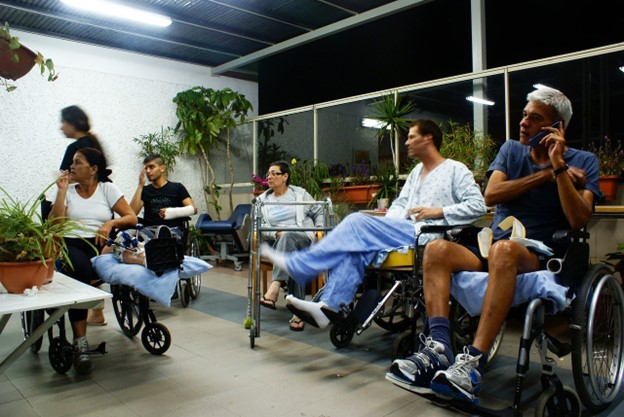Living with a long-term disability poses various challenges, some obvious and others not so much. While society has made significant strides in promoting awareness about disabilities, there’s still a long way to go when it comes to establishing genuinely inclusive environments. Accessible living isn’t just about having ramps or larger bathroom stalls; it extends to societal attitudes, workplace policies, and even the intricacies of online spaces.
Here are some ways to promote accessibility and inclusion for individuals living with long-term disabilities.
1. Knowledge Is Power: Legal Rights And Advocacy
If you’re living with a long-term disability or are a caregiver, understanding the legal landscape is crucial. There are various laws and regulations, such as the Americans with Disabilities Act (ADA), that provide protection against discrimination based on disability.
A long term disability attorney can guide you through these complexities, ensuring that you’re aware of your rights and can advocate for yourself. Knowing your legal rights can not only provide you with peace of mind but also help you navigate the systems designed to assist you better.
The more we educate ourselves and the public about these laws, the more we help create an inclusive society.
2. Adapted Physical Infrastructure
Public spaces must be designed to accommodate everyone, including those with long-term disabilities. This extends beyond just installing ramps or elevators.
Consideration must also be given to lighting for those with visual impairments, tactile flooring for navigation, and signages that are easy to read and understand. Local governments and community organizations must collaborate to create truly accessible spaces.
3. Digital Accessibility
As the world becomes increasingly digitized, it’s crucial that online spaces are equally accessible. Web developers and designers should follow the Web Content Accessibility Guidelines (WCAG) to ensure their sites can be navigated by those with various disabilities.
This includes things like text-to-speech capabilities, easy-to-read fonts, and keyboard navigation. Apps and software should also be designed with accessibility in mind to ensure that everyone can participate in the digital world.
4. Inclusive Hiring Practices
Workplaces can also play a pivotal role in promoting inclusivity. Employers should have clear policies to ensure that individuals with long-term disabilities have an equal opportunity in the hiring process.
Job descriptions must be written clearly to specify only the essential functions of the job, so as not to discourage potential applicants. Workplaces should also offer flexibility, both in terms of working hours and work locations, to accommodate different needs.
5. Community Engagement And Social Inclusion
Physical and digital accessibility are important, but so is the social aspect.
People with long-term disabilities often face social isolation due to limited opportunities for community engagement. Creating accessible events, workshops, and social gatherings can significantly impact the well-being of those with long-term disabilities. From accessible venues to captioned performances and beyond, there’s a wealth of opportunities to promote social inclusion.
6. Mental Health Support
It’s essential to address the mental health implications of living with a long-term disability. Beyond the physical limitations, the emotional and psychological toll can be significant. Providing accessible mental health services, including counseling and support groups tailored to those with long-term disabilities, is crucial for holistic well-being.
7. Education And Awareness
One of the most potent ways to promote accessibility and inclusion is through education and raising awareness.
Unfortunately, many people are still unaware of the unique challenges faced by those living with long-term disabilities, which leads to unintentional exclusion and discrimination. Schools and educational institutions can play a vital role here by incorporating inclusivity training and disability awareness into their curriculums.
This education should extend into adulthood, with corporations offering training programs that educate their employees about diversity, inclusion, and the specific needs of those with long-term disabilities.
The aim should be to foster a mindset of empathy and understanding, so people become advocates for inclusion in every aspect of life—be it ensuring an accessible design in a community project or simply being more mindful of the language we use when discussing disability.
Conclusion
Creating a society that promotes accessibility and inclusion for individuals with long-term disabilities is not just the responsibility of one group or institution. It’s a collective effort that requires the active participation of everyone—governments, employers, communities, and individuals alike.
Whether it’s through seeking guidance from professionals, creating more accessible public and digital spaces, or fostering a culture of inclusivity in our workplaces and communities, every step counts. By committing to these initiatives, we move closer to a society where everyone, regardless of their physical or cognitive abilities, can live a fulfilling life.
Read Also
- The Future of Men’s Health: Why Telehealth Is Here to StayTelehealth isn’t just a pandemic trend that faded into the background. For Australian men, it has become one of the most practical, time-saving, and stress-free ways to manage everyday health — and it’s shaping the future of how we access care. Platforms like DOCTO, an Australian online doctor and specialist telehealth service, are leading the… Read more: The Future of Men’s Health: Why Telehealth Is Here to Stay
- How to Build a Simple, Clean Skincare Routine ?You don’t need a complicated skincare routine. It doesn’t have to be something that requires twenty different products and confusing steps. Your routine works well with just a few high-quality clean ingredients. The beauty industry keeps pushing more products, but your skin actually needs less. You only need a simple approach to get better results… Read more: How to Build a Simple, Clean Skincare Routine ?
- How Preventive Dental Care Supports Overall HealthHave you ever wondered how a simple dental checkup could impact your entire body? Oral health is more than just a bright smile. Studies show that poor dental habits can contribute to serious health problems. Gum disease and tooth decay are linked to heart disease, diabetes, and infections. Yet, many people overlook preventive dental care.… Read more: How Preventive Dental Care Supports Overall Health
- Seeing Clearly in a High-Tech World: A Deep Dive into Advanced Vision Care ServicesProtecting your eyesight isn’t optional—it’s essential. Modern eye care has evolved far beyond basic exams, offering advanced diagnostics, personalized treatments, and surgical innovations that keep vision sharp for life. A leading example is Intermountain Eye Center, home to specialists like Dr Fishburn Boise, where patients receive comprehensive, high-level vision care designed to preserve long-term eye… Read more: Seeing Clearly in a High-Tech World: A Deep Dive into Advanced Vision Care Services
- Why the Keto Diet Works for Some People—and Fails Dramatically for Others: An Ayurvedic Breakdown for Modern HealthcareThe keto diet has dominated weight-loss culture for years. For some people, it produces rapid fat loss, stable energy, and improved mental clarity. For others—especially those who gain weight easily—it leads to burnout, digestive distress, rebound weight gain, high cholesterol, and a metabolism that feels slower than before. Healthcare often frames this as a discipline… Read more: Why the Keto Diet Works for Some People—and Fails Dramatically for Others: An Ayurvedic Breakdown for Modern Healthcare






